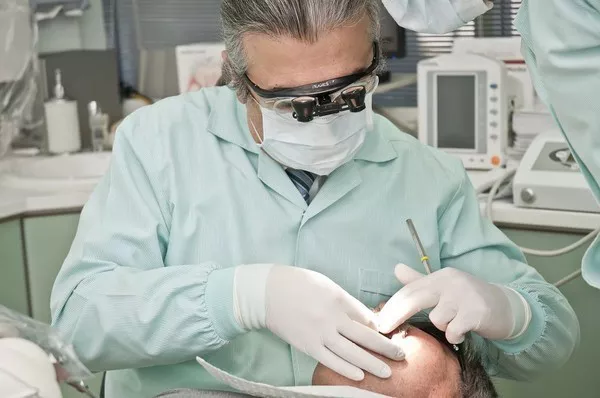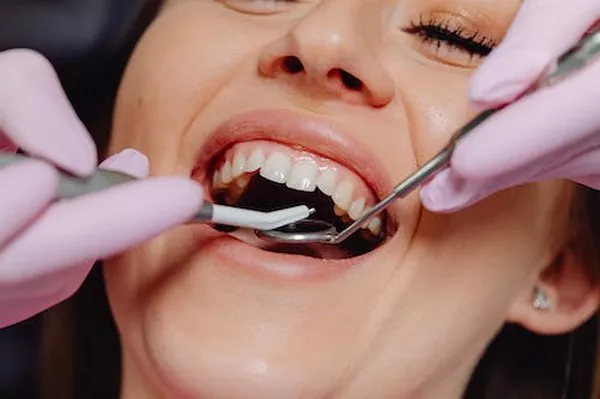Definition of Gingivitis
Gingivitis, derived from the Latin word “gingiva” meaning gums, is a common and mild form of gum disease characterized by inflammation of the gums. It is often the result of poor oral hygiene habits that lead to the accumulation of plaque, a sticky film of bacteria that forms on the teeth. Gingivitis is marked by symptoms such as redness, swelling, and bleeding gums, and if left untreated, it can progress to more severe forms of gum disease. Despite its prevalence, gingivitis is generally reversible with proper oral care and professional treatment.
Causes of Gingivitis
Gingivitis typically develops due to a bacterial infection caused by plaque overgrowth. Plaque is a biofilm composed of bacteria, saliva, and food particles that adhere to the tooth surfaces. When plaque is not adequately removed through brushing and flossing, it can irritate the gums and lead to inflammation. Certain factors can exacerbate the development of gingivitis, including:
Poor Oral Hygiene: Inadequate brushing and flossing allow plaque to accumulate along the gumline, increasing the risk of gingivitis.
Tobacco Use: Smoking or chewing tobacco can impair the body’s ability to fight infection and hinder the healing process, making individuals more susceptible to gingivitis.
Hormonal Changes: Hormonal fluctuations, such as those occurring during puberty, pregnancy, or menopause, can increase gum sensitivity and make them more prone to inflammation.
Certain Medications: Some medications, such as anticonvulsants, immunosuppressants, and certain calcium channel blockers, can cause gum overgrowth, making it easier for plaque to accumulate and leading to gingivitis.
Genetic Predisposition: Genetics play a role in determining an individual’s susceptibility to gum disease. Some people may be more genetically predisposed to gingivitis due to variations in immune response or enamel thickness.
Specific Bacteria Involved
The bacteria responsible for gingivitis are primarily gram-negative anaerobic bacteria that thrive in the absence of oxygen. These bacteria are commonly found in dental plaque, the sticky film that forms on the teeth and gums. As plaque accumulates, bacteria multiply and release toxins that irritate the gums, triggering an inflammatory response. Among the bacteria associated with gingivitis, two common culprits are:
Porphyromonas gingivalis: This bacterium is a key player in the progression of gingivitis to more severe forms of gum disease. It produces enzymes that break down gum tissue and evade the body’s immune defenses, allowing it to thrive and exacerbate inflammation.
Treponema denticola: Another anaerobic bacterium commonly found in plaque, Treponema denticola is associated with periodontal disease and contributes to tissue destruction and inflammation in the gums.
Role of Plaque and Tartar
Plaque forms continuously on the teeth as a result of bacterial colonization. When plaque is not removed through proper oral hygiene practices, it can harden into tartar, also known as calculus, within 24 to 72 hours. Tartar provides a rough surface for additional plaque accumulation and can only be removed through professional dental cleaning.
Tartar harbors bacteria and toxins that further irritate the gums and promote gingivitis. The presence of tartar exacerbates inflammation and makes it more difficult to maintain good oral health. Regular brushing and flossing help prevent the buildup of plaque and tartar, reducing the risk of gingivitis and gum disease.
Prevention and Treatment
Preventing gingivitis begins with establishing good oral hygiene habits:
Brushing: Brush your teeth at least twice a day using fluoride toothpaste and a soft-bristled toothbrush. Brushing helps remove plaque from the tooth surfaces and along the gumline.
Flossing: Floss between your teeth daily to remove plaque and food particles from areas that your toothbrush cannot reach. Flossing is essential for preventing plaque buildup and gum inflammation.
Regular Dental Checkups: Schedule regular dental checkups and cleanings every six months or as recommended by your dentist. Professional cleanings help remove plaque and tartar buildup, reducing the risk of gingivitis and gum disease.
Healthy Lifestyle Choices: Avoid tobacco use and maintain a balanced diet rich in fruits, vegetables, and whole grains. Limiting sugary snacks and beverages can also help prevent plaque formation and reduce the risk of gingivitis.
In addition to practicing good oral hygiene, treating gingivitis may require professional intervention, including:
Professional Cleaning: Dental professionals can remove plaque and tartar buildup through scaling and root planing procedures. These deep cleaning techniques reach below the gumline to remove bacteria and smooth the tooth roots, promoting gum healing.
Antibacterial Mouthwash: Dentists may prescribe antimicrobial mouthwash to help reduce bacteria and control gingival inflammation. Mouthwashes containing chlorhexidine or essential oils can be effective in managing gingivitis when used as directed.
Lifestyle Modifications: Addressing underlying risk factors, such as tobacco use or poorly controlled diabetes, can help improve gum health and prevent gingivitis from recurring.
Complications of Untreated Gingivitis
If left untreated, gingivitis can progress to a more serious form of gum disease known as periodontitis. Periodontitis is characterized by irreversible damage to the gums, bone loss around the teeth, and tooth loss. Chronic inflammation associated with periodontitis has also been linked to systemic health conditions, including cardiovascular disease, diabetes, and respiratory infections.
Conclusion
Gingivitis is a common and preventable condition that results from bacterial infection and plaque accumulation along the gumline. By practicing good oral hygiene habits, seeking regular dental care, and addressing underlying risk factors, individuals can reduce their risk of developing gingivitis and maintain optimal gum health. Early detection and treatment of gingivitis are essential for preventing its progression to more severe forms of gum disease and minimizing the risk of associated complications.
FAQs About Gingivitis
1. What infection causes gingivitis?
Gingivitis is primarily caused by a bacterial infection resulting from the overgrowth of plaque on the teeth and gums. The bacteria found in plaque produce toxins that irritate the gum tissue, leading to inflammation and the characteristic symptoms of gingivitis, such as redness, swelling, and bleeding gums.
2. What parasite causes gingivitis?
Gingivitis is not typically caused by parasites. Rather, it is primarily attributed to bacterial infection, specifically gram-negative anaerobic bacteria commonly found in dental plaque. These bacteria thrive in the absence of oxygen and contribute to the development of gingivitis by releasing toxins that provoke an inflammatory response in the gums.
3. Does streptococcus cause gingivitis?
While streptococcus bacteria are commonly found in the oral cavity, they are not typically associated with causing gingivitis. Gingivitis is primarily attributed to gram-negative anaerobic bacteria that accumulate in plaque along the gumline. However, streptococcus bacteria can contribute to other oral health issues, such as tooth decay and certain types of gum infections.
4. What is the best antibiotic for gingivitis?
Antibiotics are not usually the first line of treatment for gingivitis. The most effective approach to managing gingivitis involves improving oral hygiene habits, such as regular brushing, flossing, and professional dental cleanings. However, in some cases of advanced gingivitis or periodontitis, antibiotics may be prescribed by a dentist or periodontist to help control bacterial infection and reduce inflammation. The choice of antibiotic and its dosage will depend on the severity of the gum disease and the specific bacteria involved. Commonly prescribed antibiotics for gum disease include amoxicillin, metronidazole, and doxycycline.
It’s important to note that antibiotics should only be used under the guidance of a dental professional and should be taken as prescribed to minimize the risk of antibiotic resistance and other adverse effects. Additionally, antibiotics alone are not sufficient to treat gingivitis; they should be used in conjunction with other preventive measures and professional dental care for optimal oral health outcomes.
You Might Be Interested In
































